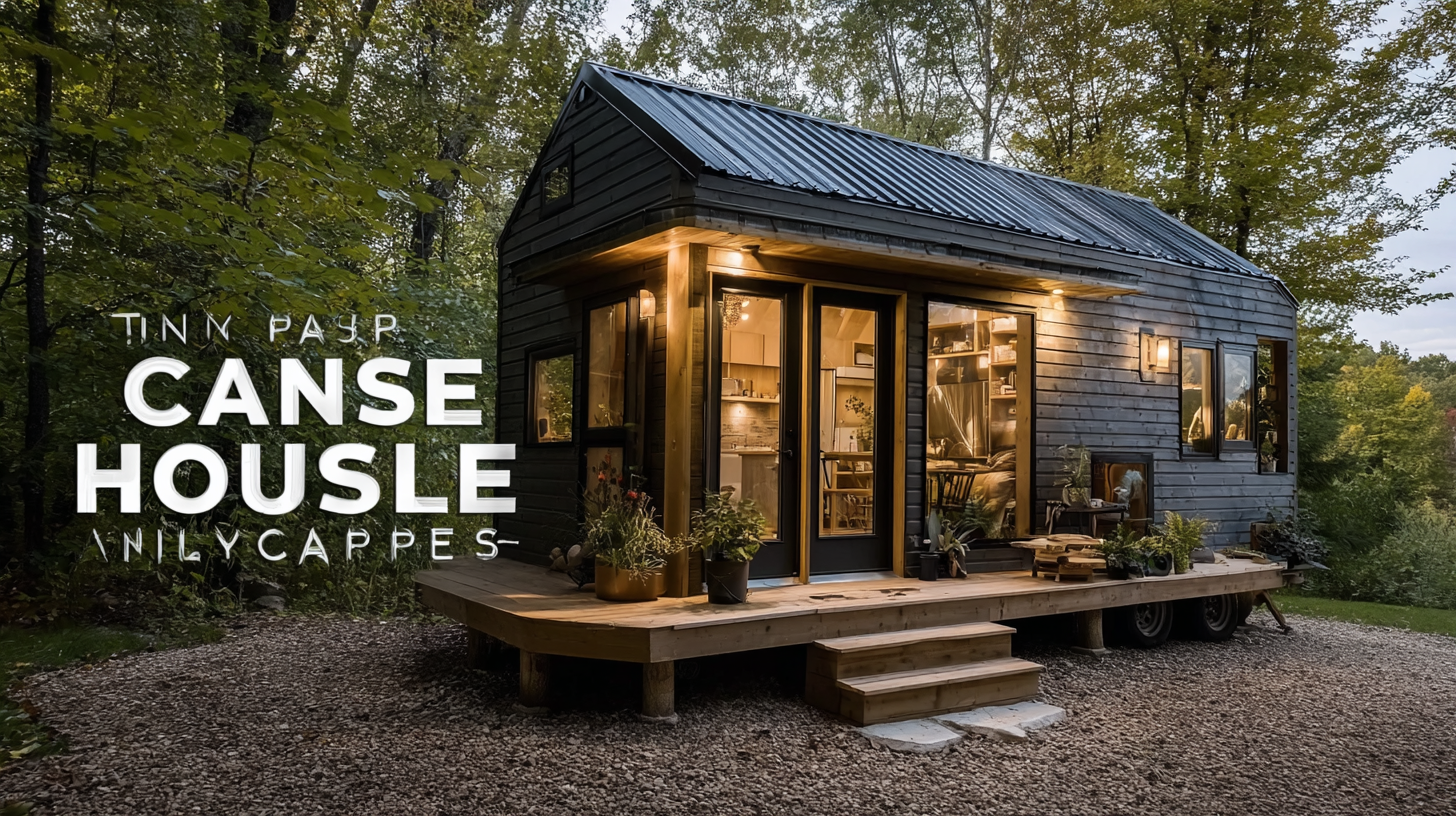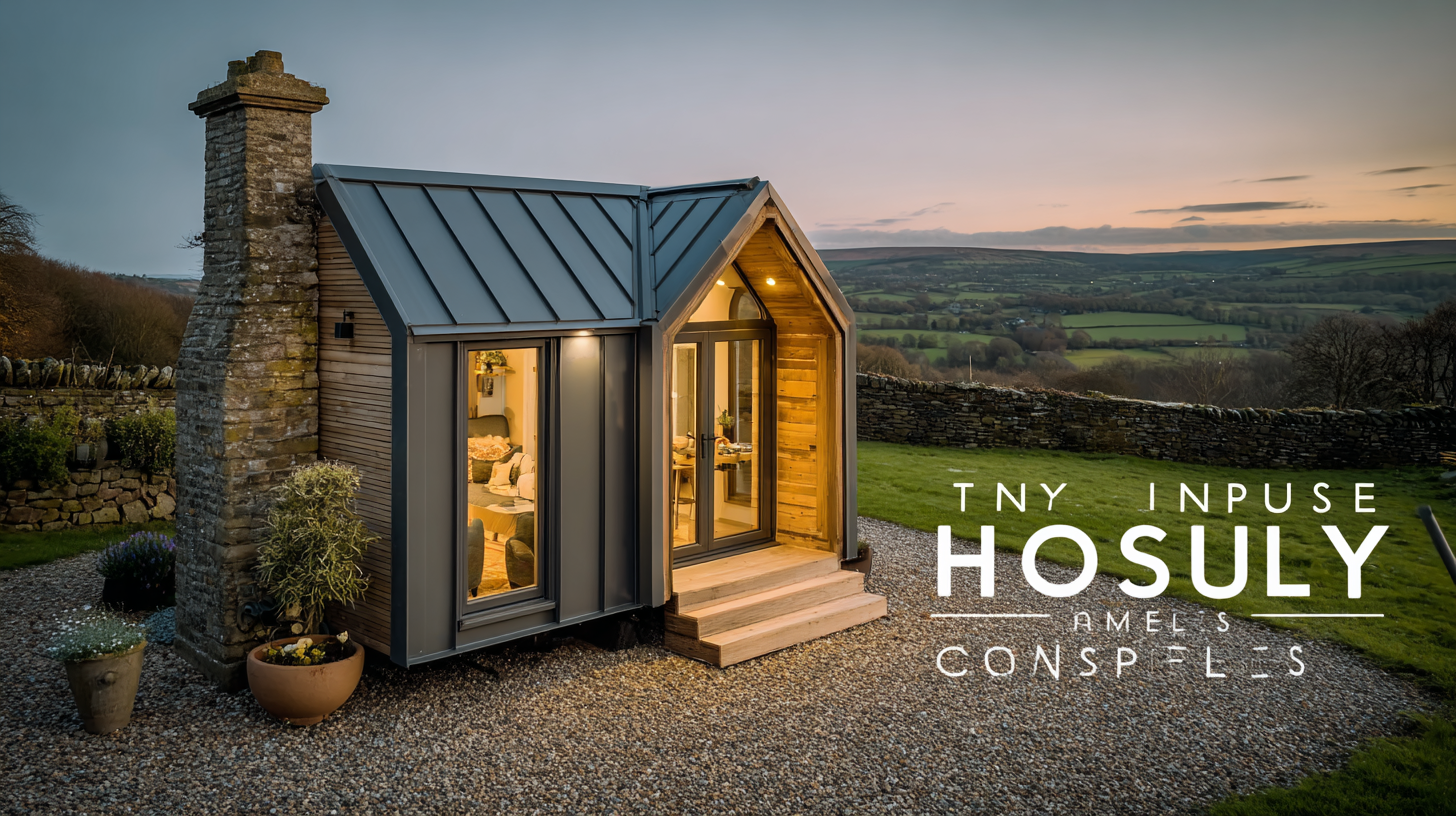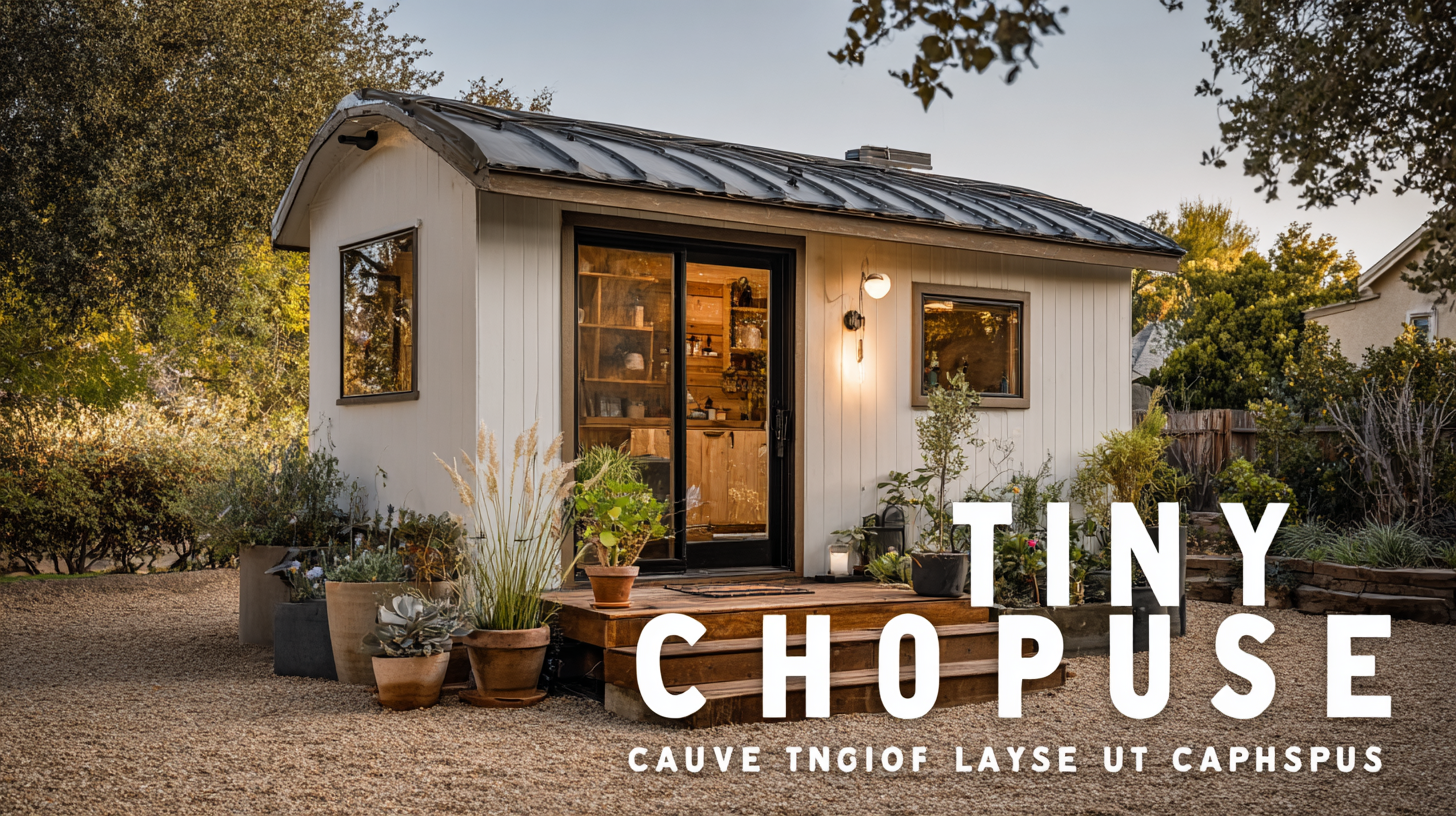
News
Challenges Faced by Homeowners in Adopting the Best Tiny House Capsules
As the trend of minimalistic living gains momentum, Tiny House Capsules have emerged as a popular alternative for homeowners seeking to downsize without compromising on quality. According to a report by the American Tiny House Association, approximately 68% of tiny house owners cite financial freedom as a key motivation, while 56% appreciate the low maintenance that accompanies smaller living spaces. However, despite their benefits, homeowners face significant challenges in adopting these innovative housing solutions. From navigating the complexities of warranty services to grappling with unexpected repair costs, understanding the nuances of ownership is crucial. This blog will delve into the advantages of after-sales services and maintenance costs related to Tiny House Capsules, guiding prospective owners through the essential "How to" considerations that can facilitate a seamless transition into tiny living.

Understanding Industry Production Standards for Tiny House Capsules
When homeowners consider adopting tiny house capsules, understanding industry production standards becomes crucial. As the tiny house movement gains momentum, various production standards have emerged to ensure safety, sustainability, and livability. According to a report from the U.S. Department of Housing and Urban Development (HUD), structures must comply with specific building codes that vary by region. These codes address essential aspects such as electrical systems, plumbing, and insulation, which are critical for ensuring the durability and habitability of tiny homes.
Additionally, a recent study by the National Association of Home Builders (NAHB) highlights that the average cost of building a tiny house capsule, compliant with industry standards, can range from $20,000 to $60,000, depending on size and materials used. This price variation underscores the importance of homeowners being well-informed about production standards to avoid unexpected expenses. Adhering to these standards not only enhances the value of the tiny house but also ensures a high quality of life for its occupants, aligning with the growing demand for eco-friendly and efficient living solutions in today's market.

Key Challenges in Meeting Regulatory Compliance for Tiny Homes
Homeowners looking to embrace the tiny house movement often face significant regulatory challenges that can hinder their aspirations. The National Association of Home Builders (NAHB) reports that nearly 70% of zoning laws across the United States are not conducive to tiny homes, largely due to minimum square footage requirements that can render many tiny structures illegal. Furthermore, building codes vary considerably from one municipality to another, making it difficult for homeowners to navigate the complex landscape of compliance. This discrepancy often results in costly delays and legal hurdles, which can deter potential tiny house enthusiasts.

Additionally, a study by the American Tiny House Association indicates that many homeowners struggle with obtaining permits for tiny houses on wheels, which are classified as recreational vehicles in many jurisdictions. As a result, these homeowners may find their options limited or face the risk of being fined or forced to dismantle their homes. The lack of a standardized approach to tiny home regulations not only stifles innovation but also complicates the journey for those seeking a simpler, more sustainable lifestyle. Addressing these regulatory barriers is essential for the tiny house movement to reach its full potential and gain widespread acceptance.
Balancing Innovation and Safety in Tiny House Design Standards
The tiny house movement has gained significant momentum, attracting homeowners seeking a minimalist lifestyle and sustainable living. However, the evolution of tiny house capsules brings forth unique challenges that require a careful balance between innovative designs and safety standards. As these homes become more popular, ensuring compliance with building codes, fire regulations, and structural integrity is crucial for both builder and homeowner.
When designing a tiny house, it's essential to incorporate advanced safety features while embracing creativity. For instance, consider using fire-resistant materials, especially for roofing and walls. Additionally, ensure that your designs incorporate natural lighting and ventilation, as these elements can significantly enhance the quality of living while adhering to health standards.
It's also important to consult local zoning laws before embarking on a tiny house project. Researching and understanding these regulations will help you avoid potential legal issues down the line. Partnering with experienced architects or builders who specialize in tiny homes can provide invaluable insights into maintaining a balance between innovation and safety. Ultimately, a thoughtfully designed tiny house not only meets the homeowner's needs but also adheres to essential safety parameters.
Evaluating Sustainability Practices in Tiny House Manufacturing
The growing popularity of tiny houses has prompted a closer examination of sustainability practices within their manufacturing. According to a report by the American Institute of Architects, tiny homes can reduce energy consumption by up to 45% compared to traditional houses, making them an appealing option for eco-conscious homeowners.
However, not all tiny house manufacturers prioritize sustainable materials or energy-efficient designs. It's crucial for potential buyers to evaluate a builder's commitment to environmentally friendly practices, which can include sourcing renewable materials and minimizing waste during production.
When considering a tiny house capsule, homeowners should look for manufacturers that adhere to green certifications. For instance, the National Association of Home Builders highlights that homes certified under programs like Energy Star can significantly reduce energy costs and carbon footprints. Additionally, researching the use of recycled or reclaimed materials can provide insight into a company's sustainability efforts.
Tips: Before making a purchase, compare several tiny house manufacturers and their sustainability claims. Inquire about the types of materials used and seek out third-party certifications. Engaging with previous customers can also give you a better understanding of how eco-friendly their practices truly are. Remember, sustainability should be a priority, not an afterthought, in your tiny house journey.
Consumer Education on Safety and Standards in Tiny Home Living
As homeowners consider the exciting prospect of tiny house living, one crucial area that demands attention is consumer education on safety and standards. Tiny homes, often celebrated for their minimalistic appeal and environmental efficiency, are not all created equal. It is essential for potential buyers to understand the various building codes and safety regulations that govern tiny house construction. These guidelines ensure that the structures are not only livable but also secure against hazards like fire, flooding, or structural collapse. Knowledge of these standards can help enthusiasts make informed decisions and navigate the complexities of local regulations.
Furthermore, safety features often vary significantly between different tiny house models and manufacturers. Homeowners need to educate themselves on best practices for installation, materials, and design choices that contribute to a safe living environment. Whether it’s understanding the importance of proper insulation to prevent mold growth or knowing the critical aspects of electrical systems to reduce fire risks, awareness is key. By actively seeking consumer education on these topics, homeowners can ensure that their investment in a tiny house capsule meets their safety expectations and enhances their overall experience in this unique lifestyle.
